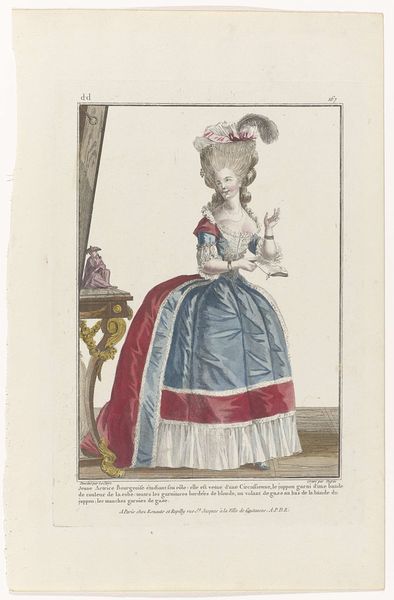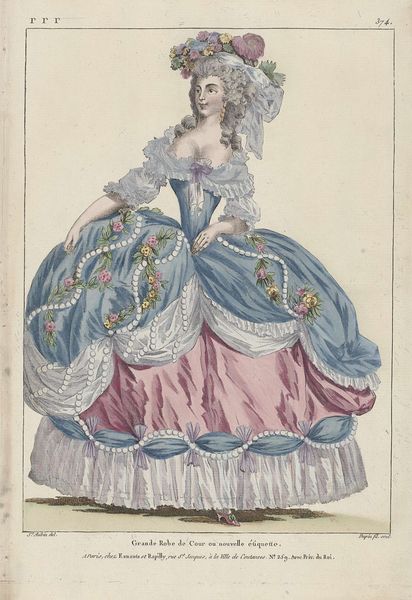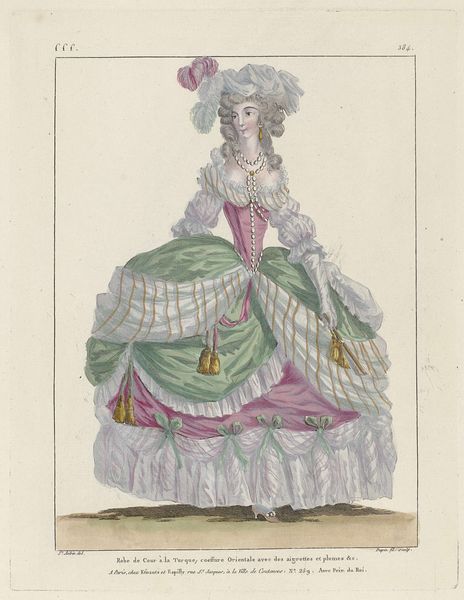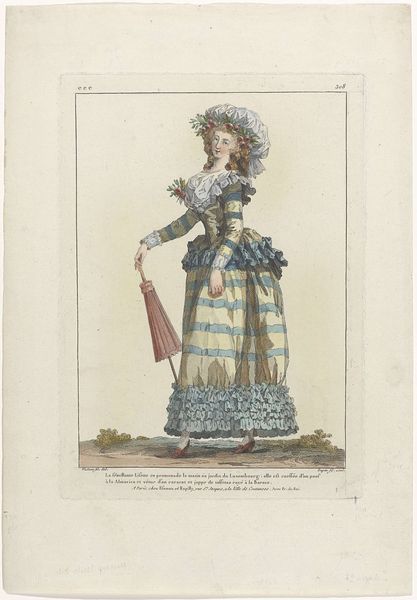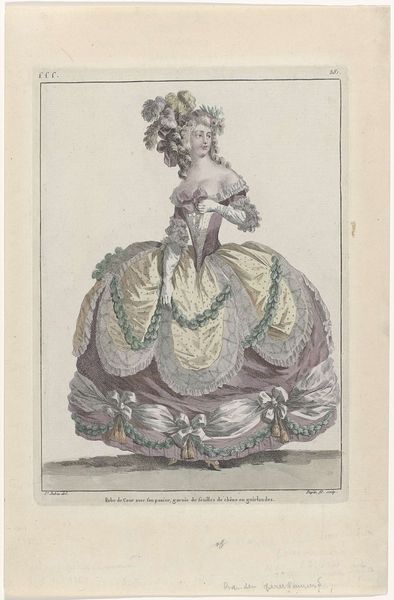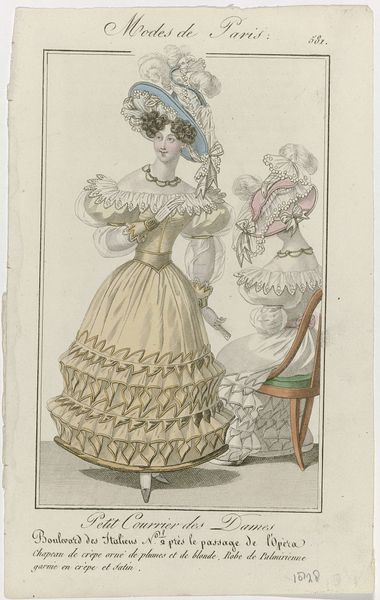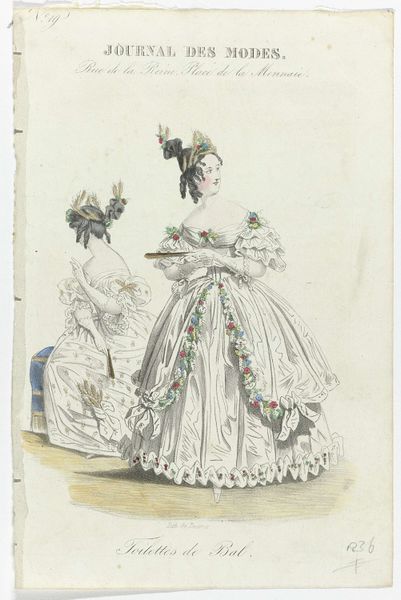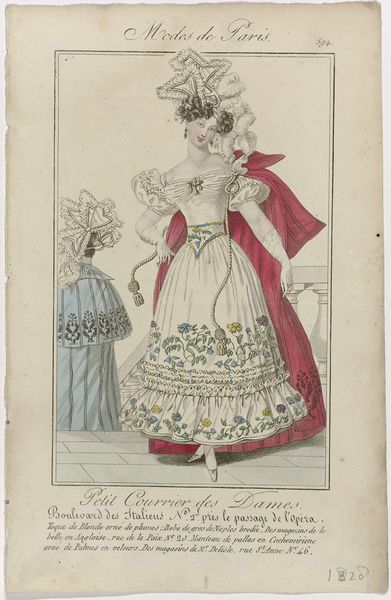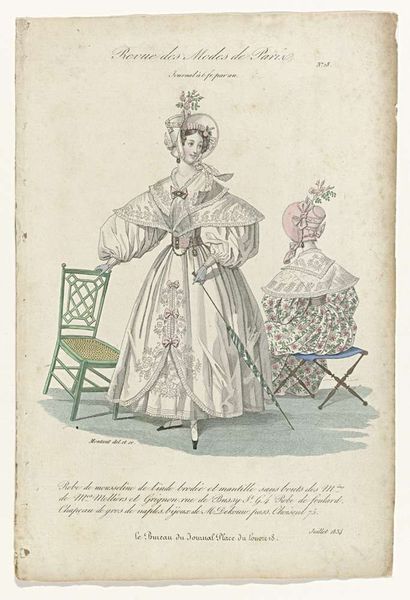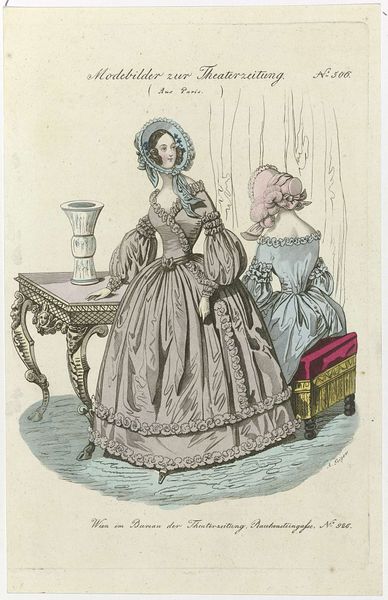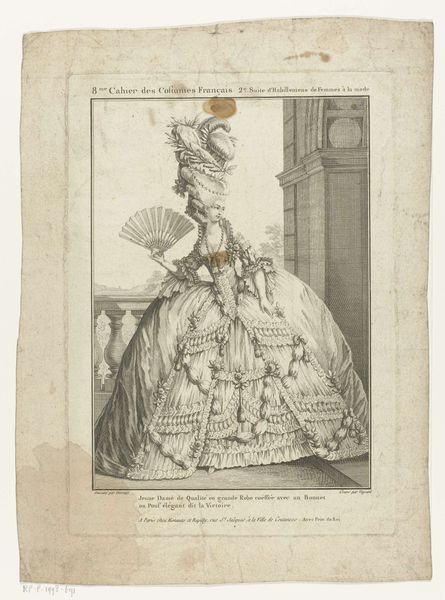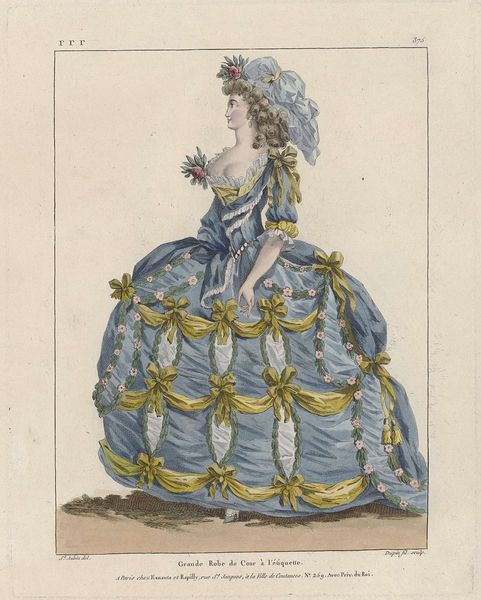
Marie Antoinette: The Queen of Fashion: Gallerie des Modes et Costumes Français 1778
0:00
0:00
Dimensions: height 278 mm, width 193 mm
Copyright: Rijks Museum: Open Domain
Editor: So, this piece is "Marie Antoinette: The Queen of Fashion: Gallerie des Modes et Costumes Français" by Charles Emmanuel Patas, dating back to 1778. It appears to be a print, perhaps with coloured pencil or watercolor, and the level of detail is striking. I'm particularly drawn to the depiction of wealth and status; the ornate chair, her extravagant gown. What can you tell me about its cultural context? Curator: This engraving speaks volumes about the socio-political landscape of pre-revolutionary France. The "Gallerie des Modes" itself was a powerful vehicle. Consider how it actively promoted and disseminated images of elite fashion. Marie Antoinette, in particular, became a figurehead for luxury. Do you see how the publication, ostensibly about fashion, was participating in the construction—and potential critique—of royal power? Editor: Absolutely. The very act of mass-producing and circulating her image, in such opulent attire, makes it both a celebration and a target, especially with societal inequalities growing. Was this "fashion plate" meant for the aristocracy alone, or was its appeal broader? Curator: It had a carefully curated reach. Though expensive, these prints were collected by the aspiring middle class, influencing their desires and perceptions. But they also fueled resentment among those excluded. Think about how imagery contributes to class consciousness. Editor: That makes sense. I hadn’t thought about how images could both inspire and provoke! This single artwork shows how fashion intertwines with power and public perception. Thank you for helping me see the political weight embedded in something seemingly so decorative. Curator: And consider the artist's role as both documentarian and instigator. We need to appreciate how artists engage with power structures through their work and its dissemination, consciously or unconsciously. It’s always about power.
Comments
rijksmuseum about 2 years ago
⋮
French queens were expected to set an example in the realm of fashion. As the wife of Louis XVI, Marie Antoinette threw herself into this task with enthusiasm. Together with her marchande de modes Rose Bertin and her hairdresser Léonard, she launched many a new fashion. Court etiquette dictated robes de cour – lavishly embellished gowns with wide skirts. When receiving visitors, Marie Antoinette wore a robe à la polonaise 1 2, but preferred an informal, loose-fitting gown when at her own pavilion in Versailles. This chemise de la reine 3 was quickly adopted by other women of the elite.
Join the conversation
Join millions of artists and users on Artera today and experience the ultimate creative platform.
